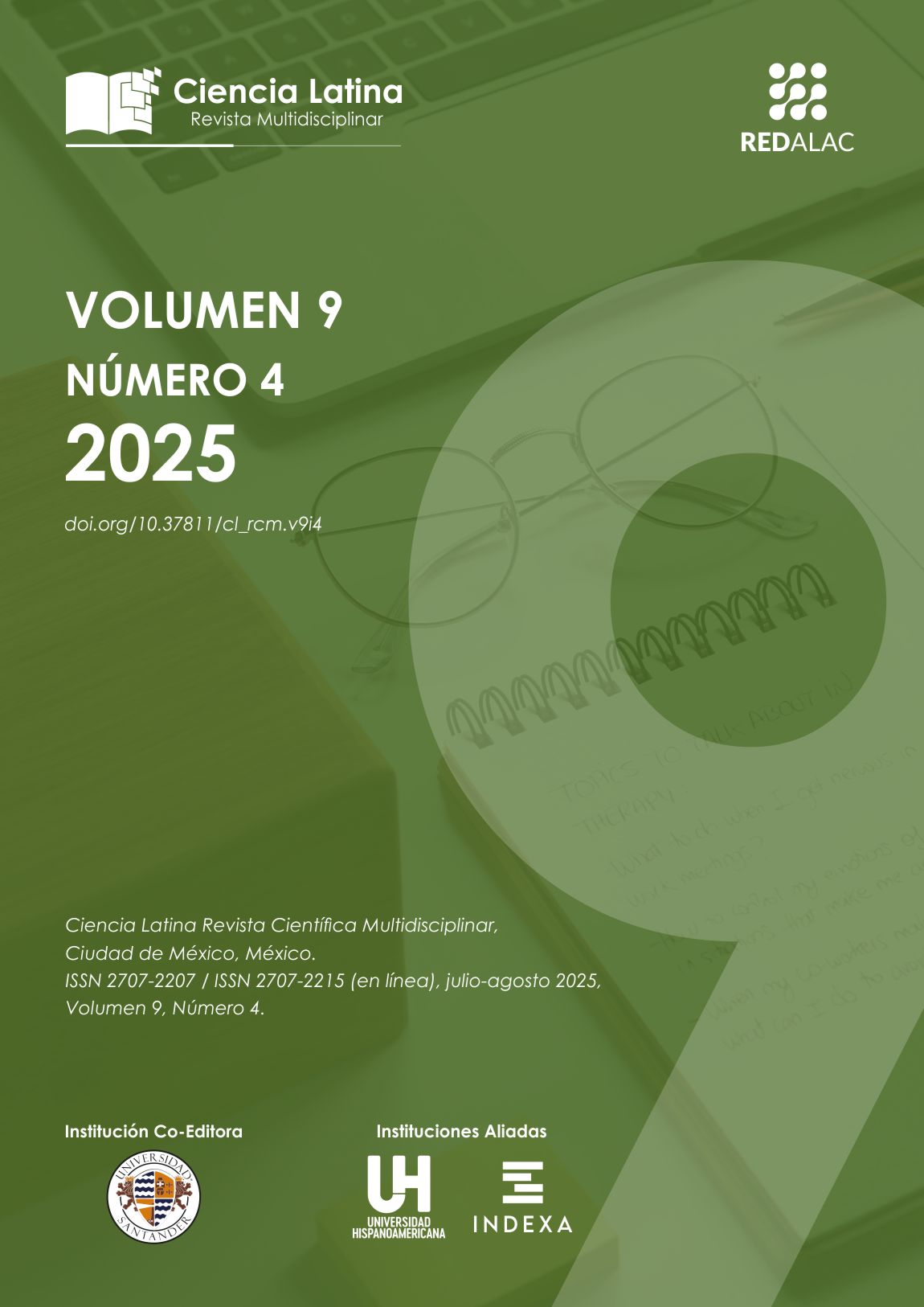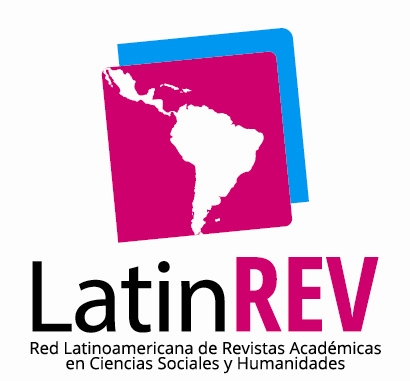Justicia Ambiental y Regulación de Emisiones BTEX en Estaciones de Servicio: Una Propuesta Normativa
Resumen
Este estudio propone una reforma normativa para reducir los riesgos sanitarios derivados de la exposición a compuestos BTEX (benceno, tolueno, etilbenceno y xilenos) en estaciones de servicio en México. Mediante un análisis cualitativo-descriptivo, se revisaron 47 reglamentos municipales vigentes hasta 2024, seleccionados por criterios de accesibilidad, densidad urbana y representatividad geográfica. Los resultados revelan vacíos normativos críticos: ausencia de distancias mínimas obligatorias, falta de monitoreo ambiental, escasa consulta vecinal y baja exigencia de tecnologías de control como los sistemas de recuperación de vapores. Se compararon estos marcos con regulaciones internacionales (EPA, CONAMA, MITECO), destacando el rezago normativo mexicano. En respuesta, se propone una hoja de ruta con siete ejes clave: zonificación con perímetros de seguridad, evaluación ambiental regional, recuperación de vapores Fase II, monitoreo comunitario de BTEX, consulta vecinal certificada, restricciones por geología y planes de contingencia. La propuesta está fundamentada en principios de justicia ambiental, equidad intergeneracional y derecho constitucional a un medio ambiente sano. Su implementación busca fortalecer la gobernanza local, reducir la exposición de la población vulnerable y avanzar hacia una regulación ambiental coherente y basada en evidencia científica.
Descargas
Citas
Agencia para Sustancias Tóxicas y el Registro de Enfermedades (ATSDR). (2009). Toxicological Profile for Benzene. U.S. Department of Health and Human Services. https://www.atsdr.cdc.gov/toxprofiles/tp3.html
Ahmadi, Z., Moradabadi, A., Abdollahdokht, D., Mehrabani, M., & Nematollahi, M. H. (2019). Association of environmental exposure with hematological and oxidative stress alteration in gasoline station attendants. Environmental Science and Pollution Research, 26(20), 20411-20417.
Aksoy, M., Dinçol, K., Erdem, Ş., & Dinçol, G. (1972). Acute leukemia due to chronic exposure to benzene. The American Journal of Medicine, 52(2), 160-166.
Arriazu-Ramos, A., Santamaría, J. M., Monge-Barrio, A., Bes-Rastrollo, M., Gutierrez Gabriel, S., Benito Frias, N., & Sánchez-Ostiz, A. (2025). Health Impacts of Urban Environmental Parameters: A Review of Air Pollution, Heat, Noise, Green Spaces and Mobility. Sustainability, 17(10), 4336.
Askari, A., Abadi, A. S. S., Golbabaei, F., Jafarzadeh, E., & Aazam, K. (2022). Cancer and Noncancer Risk Assessment for Workers Exposed to the Chemical Pollutants in Ahvaz Gas Stations, Iran. International Journal of Environmental Health Engineering, 11(1), 19.
Blamah, N. V., Tagwi, M. U., & Ezemokwe, I. U. (2012). Locational impact assessment of gasoline service stations along Abuja-Keffi road and environs in Karu, Abuja, Nigeria. Journal of Environmental Management and Safety, 3(5), 18-18.
Brender JD, Maantay JA, Chakraborty J. (2011). Residential proximity to environmental hazards and adverse health outcomes. Am J Public Health. 101 Suppl 1(Suppl 1):S37-52
Buttel, F. H. (1987). New directions in environmental sociology. Annual Review of Sociology, 13, 465-488.
Chaiklieng, S. (2021). Risk assessment of workers’ exposure to BTEX and hazardous area classification at gasoline stations. PLoS One, 16(4), e0249913.
Chaiklieng, S., Dacherngkhao, T., Suggaravetsiri, P., & Pruktharathikul, V. (2020). Fire risk assessment in fire hazardous zones of gasoline stations. Journal of occupational health, 62(1), e12137.
Chaiklieng, S., Suggaravetsiri, P., & Autrup, H. (2019). Risk assessment on benzene exposure among gasoline station workers. International journal of environmental research and public health, 16(14), 2545.
Coello, F. J. P., Florentino, D., García, J., & Nazila, A. B. (2023). Alteraciones hematológicas y bioquímicas por exposición a benceno en trabajadores de, y cercanos a las estaciones de servicio. Salud de los trabajadores, 31(2), 179-191.
Conesa Fernández-Vitoria, V. (2009). Guía metodológica para la evaluación del impacto ambiental. Ediciones Mundi-Prensa.
Costa-Amaral, I. C., Carvalho, L. V., Santos, M. V. C., Valente, D., Pereira, A. C., Figueiredo, V. O., ... & Larentis, A. L. (2019). Environmental assessment and evaluation of oxidative stress and genotoxicity biomarkers related to chronic occupational exposure to benzene. International Journal of Environmental Research and Public Health, 16(12), 2240.
Cruz, L. P., Alve, L. P., Santos, A. V., Esteves, M. B., Gomes, Í. V., & Nunes, L. S. (2017). Assessment of BTEX concentrations in air ambient of gas stations using passive sampling and the health risks for workers. Journal of Environmental Protection, 8(1), 12-25.
Cruz-Núñez, X., Hernández-Solı́s, J. M., & Ruiz-Suarez, L. G. (2003). Evaluation of vapor recovery systems efficiency and personal exposure in service stations in Mexico City. Science of the total environment, 309(1-3), 59-68.
De Sousa, T. B. (2015). Environmental Impacts Management of a Brazilian Gas Station: A Case Study. Global Journal of Researches in Engineering: G Industrial Engineering, 15(3), 22-32.
Dehghani, M., Fazlzadeh, M., Sorooshian, A., Tabatabaee, H. R., Miri, M., Baghani, A. N., ... & Rashidi, M. (2018). Characteristics and health effects of BTEX in a hot spot for urban pollution. Ecotoxicology and environmental safety, 155, 133-143.
Edokpolo, B., Yu, Q. J., & Connell, D. (2014). Health risk assessment of ambient air concentrations of benzene, toluene and xylene (BTX) in service station environments. International journal of environmental research and public health, 11(6), 6354-6374.
Elsayyad, N. (2025). Petrol Filling Stations as Emerging Social Hubs: Assessing Health Risks and Urban Planning Challenges–A Case Study of New Cairo, Egypt. JES. Journal of Engineering Sciences, 53(3), 208-230.
EPA (Environmental Protection Agency). (2022). Air toxics monitoring and community risk assessment tools. United States Environmental Protection Agency. https://www.epa.gov/amtic
EPA. (2023). Technical overview of volatile organic compounds (VOCs). United States Environmental Protection Agency. https://www.epa.gov
Giechaskiel, B., Joshi, A., Ntziachristos, L., & Dilara, P. (2019). European regulatory framework and particulate matter emissions of gasoline light-duty vehicles: A review. Catalysts, 9(7), 586.
Hashemi, F., Hoepner, L., Hashemi, H., Hoseini, M., Omeragić, E., Hamidinejad, F. S., ... & Guo, C. (2025). Prenatal Exposure to benzene, toluene, ethylbenzene, and xylene (BTEX) and the Risk of Autism Spectrum Disorders in Children Aged 16 to 37 Months: A Prospective Cohort Study. Environmental Pollution, 126700.
Hicklin, W., Farrugia, P. S., & Sinagra, E. (2018). Investigations of VOCs in and around buildings close to service stations. Atmospheric environment, 172, 93-101.
Hilpert, M., Mora, B. A., Ni, J., Rule, A. M., & Nachman, K. E. (2015). Hydrocarbon release during fuel storage and transfer at gas stations: environmental and health effects. Current Environmental Health Reports, 2(4), 412-422.
HOELZEL, N. Z. (2004). Lessons Learned at West Covina, California: A Case Study on Bringing Science and Planning Together to Protect Human Health, Safety, and Welfare from Vapor Intrusion (Master's thesis, University of Cincinnati).
Huy, L. N., & Oanh, N. T. K. (2020). Emission control for volatile organic compounds from gasoline stations and implication on ozone-forming potential. Atmospheric Pollution Research, 11(6), 87-98.
Instituto Nacional de Ecología (INE). (1994). Norma Oficial Mexicana NOM-086-ECOL-1994, Contaminación atmosférica-Especificaciones sobre protección ambiental que deben reunir los combustibles fósiles líquidos y gaseosos que se usan en fuentes fijas y móviles. Retrieved from http://dof.gob.mx/nota_detalle.php?codigo=4769989&fecha=02/12/1994
International Agency for Research on Cancer (IARC). (1987). Benzene. IARC Monographs on the Evaluation of Carcinogenic Risks to Humans, Vol. 45. https://monographs.iarc.fr/
Khoder, M. I., & Hassan, S. K. (2008). Weekday/weekend differences in ambient aerosol level and chemical characteristics of water-soluble components in the city centre. Atmospheric Environment, 42(32), 7483-7493.
Ley General de Equilibrio Ecológico y la Protección al Ambiente (LGEEPA) (1988)., México, PROFEPA
Ley General de Protección Civil (LGPC) 2021, Ultima reforma de la Nueva Ley publicada en el Diario Oficial de la Federación el 6 de junio de 2012. Cámara de Diputados del H. Congreso de la Unión. México. Obtenido el 23 de septiembre del 2021 de http://www.diputados.gob.mx/LeyesBiblio/pdf/LGPC_200521.pdf
Man, H., Shao, X., Cai, W., Wang, K., Cai, Z., Xue, M., & Liu, H. (2024). Utilizing a optimized method for evaluating vapor recovery equipment control efficiency and estimating evaporative VOC emissions from urban oil depots via an extensive survey. Journal of Hazardous Materials, 479, 135710.
Manisalidis, I., Stavropoulou, E., Stavropoulos, A., & Bezirtzoglou, E. (2020). Environmental and health impacts of air pollution: a review. Frontiers in public health, 8, 14.
McDonald, J. C., Lavoie, J., Cote, R., & McDonald, A. D. (1987). Chemical exposures at work in early pregnancy and congenital defect: a case-referent study. Occupational and Environmental Medicine, 44(8), 527-533.
Ministerio para la Transición Ecológica. (2023). Normativa sobre emisiones de compuestos orgánicos volátiles en estaciones de servicio. Gobierno de España.
Ministerio para la Transición Ecológica. (2023). Plan Nacional Integrado de Energía y Clima (PNIEC) 2023–2030. Gobierno de España. https://www.miteco.gob.es
Montano, L., Baldini, G. M., Piscopo, M., Liguori, G., Lombardi, R., Ricciardi, M., ... & Motta, O. (2025). Polycyclic Aromatic Hydrocarbons (PAHs) in the Environment: Occupational Exposure, Health Risks and Fertility Implications. Toxics, 13(3), 151.
Montero-Montoya, R., López-Vargas, R., & Arellano-Aguilar, O. (2018). Volatile organic compounds in air: sources, distribution, exposure and associated illnesses in children. Annals of global health, 84(2), 225.
Moschini, L. E., Santos, J. E. D., & Pires, J. S. R. (2005). Environmental diagnosis of risk areas related to gas stations. Brazilian Archives of Biology and Technology, 48, 657-666.
Natelson, E. A. (2007). Benzene‐induced acute myeloid leukemia: A clinician's perspective. American journal of hematology, 82(9), 826-830.
Niaz, K., Bahadar, H., Maqbool, F., & Abdollahi, M. (2015). A review of environmental and occupational exposure to xylene and its health concerns. EXCLI journal, 14, 1167.
Organización Internacional del Trabajo (OIT). (2001). El principio precautorio y su aplicación en el entorno laboral. Ginebra: OIT.
Organización Mundial de la Salud (WHO). (2023). Air quality guidelines for Europe (2nd ed.). Copenhague: WHO Regional Office for Europe.
Protano, C., Scalise, T., Orsi, G. B., & Vitali, M. (2012). A systematic review of benzene exposure during pregnancy and adverse outcomes on intrauterine development and birth: still far from scientific evidence. Ann Ig, 24(6), 451-463.
Rawlins, R. (2013). Planning for fracking on the Barnett Shale: urban air pollution, improving health based regulation, and the role of local governments. Va. Envtl. LJ, 31, 226.
Rentschler, J., & Leonova, N. (2023). Global air pollution exposure and poverty. Nature communications, 14(1), 4432.
Ruan, X., Shang, W., Lu, J., Li, Z., Yang, J., Cheng, J., ... & Sun, J. (2024). Maternal multivitamin supplementation mitigates the risk of fetal congenital heart disease associated with high indoor total volatile organic compounds exposure in east china: a case-control study. Environmental Health, 23(1), 110.
Santiago, F., Alves, G., Otero, U. B., Tabalipa, M. M., Scherrer, L. R., Kosyakova, N., ... & Liehr, T. (2014). Monitoring of gas station attendants exposure to benzene, toluene, xylene (BTX) using three-color chromosome painting. Molecular Cytogenetics, 7(1), 15.
Secretaría de Medio Ambiente y Recursos Naturales (SEMARNAT), & Secretaría de Energía (SENER). (2006). Norma Oficial Mexicana NOM-086-SEMARNAT-SENER-SCFI-2005, Especificaciones de los combustibles fósiles para la protección ambiental.
Secretaría de Medio Ambiente y Recursos Naturales (SEMARNAT). (2005). Norma Oficial Mexicana NOM-042-SEMARNAT-2003, Q Retrieved from http://dof.gob.mx/notadetalle.php?codigo=2091196&fecha=07/09/2005
Secretaría de Medio Ambiente y Recursos Naturales (SEMARNAT). (2012). Informe nacional sobre la calidad del aire 2010–2011.
Secretaría de Medio Ambiente y Recursos Naturales (SEMARNAT). (2012). Lineamientos para la evaluación del impacto ambiental de estaciones de servicio. México: SEMARNAT.
Secretaría de Medio Ambiente y Recursos Naturales (SEMARNAT). (2014). Proyecto de Modificación a la Norma Oficial Mexicana NOM-044-SEMARNAT-2006, Retrieved from http://dof.gob.mx/nota_detalle.php?codigo=5376263&fecha=17/12/2014
Secretaría de Medio Ambiente y Recursos Naturales (SEMARNAT). (2017). Modificación a la Norma Oficial Mexicana NOM-044-SEMARNAT-2006, Retrieved from http://www.cofemersimir.gob.mx/expedientes/20708
Secretaría de Medio Ambiente y Recursos Naturales (SEMARNAT). (2020). A Retrieved from http://dof.gob.mx/nota_detalle.php?codigo=5604713&fecha=11/11/2020
Secretaría del Medio Ambiente y Recursos Naturales (SEMARNAT). (2017). Programa de gestión federal para mejorar la calida del aire de la Megalópolis: Proaire de la Megalópolis 2017-2030. Retrieved from https://framework-gb.cdn.gob.mx/data/institutos/semarnat/Programa_de_ Gestión_Federal_2017-2030_final.pdf
SEMARNAT. (2012). Ley General del Equilibrio Ecológico y la Protección al Ambiente. Diario Oficial de la Federación. https://www.dof.gob.mx
Shinohara, N., García, J. J. F. Á., Reyes, M. M., Jiménez, B. G., Cruz, R. B., Gonzalez, B. C., & Wakamatsu, S. (2024). Exposure/risk assessment of employees in gasoline refueling stations with and without the efficacy of vapor recovery systems in Mexico. International Journal of Environmental Research and Public Health, 22(1), 10.
Snyder, R. (2012). Leukemia and benzene. International journal of environmental research and public health, 9(8), 2875-2893.
Terrés, I. M. M., Miñarro, M. D., Ferradas, E. G., Caracena, A. B., & Rico, J. B. (2010). Assessing the impact of petrol stations on their immediate surroundings. Journal of environmental management, 91(12), 2754-2762.
Tipton, M. J., Lathem, T. L., Fu, J. S., & Tschantz, M. F. (2022). Effectiveness of emissions standards on automotive evaporative emissions in Europe under normal and extreme temperature conditions. Environmental Research Communications, 4(8), 081003.
Tunsaringkarn, T., Siriwong, W., Rungsiyothin, A., & Nopparatbundit, S. (2012). Occupational exposure of gasoline station workers to BTEX compounds in Bangkok, Thailand.
Warneke, C., McKeen, S. A., De Gouw, J. A., Goldan, P. D., Kuster, W. C., Holloway, J. S., ... & Blake, D. R. (2007). Determination of urban volatile organic compound emission ratios and comparison with an emissions database. Journal of Geophysical Research: Atmospheres, 112(D10).
Wibowo, A., Lestari, F., & Modjo, R. (2023). Safety climate assessment in fuel stations in the West Java Region. Safety, 9(1), 9.
WHO. (2023). Air quality guidelines for benzene and other toxic air pollutants. World Health Organization. https://www.who.int/publications
World Health Organization (WHO). (2023). Benzene in ambient air: Health risks and risk management. WHO Regional Office for Europe. https://www.who.int/publications/i/item/9789289076715
Xiong, F., Li, Q., Zhou, B., Huang, J., Liang, G., Zhang, L. E., ... & Zou, Y. (2016). Oxidative stress and genotoxicity of long-term occupational exposure to low levels of BTEX in gas station workers. International journal of environmental research and public health, 13(12), 1212.
Yasin, S. A., & Salih, Z. R. (2025). Occupational Health Risk Assessment of Heavy Metal ExposureAmong Gas Station Workers in Erbil City. Journal of Applied Toxicology.
Yousefian, F., Hassanvand, M. S., Nodehi, R. N., Amini, H., Rastkari, N., Aghaei, M., ... & Yaghmaeian, K. (2020). The concentration of BTEX compounds and health risk assessment in municipal solid waste facilities and urban areas. Environmental Research, 191, 110068.
Yusha’u, A. M., Ojeh, V. N., Isa, S., & Yavala, D. M. (2022). Siting of Petrol Stations and Compliance to Environmental Regulations in Jalingo Metropolis, Taraba State, Nigeria.
Zhu, J., Zhu, M., Chen, L., Luo, L., Wang, W., Zhu, X., & Sun, Y. (2024). Multi-Objective Optimization of Urban Gas Station Site Selection Under Territorial Spatial Planning Constraints. ISPRS International Journal of Geo-Information, 13(11), 375.
Zubizarreta Solá, A., Martínez Menéndez, J., Rivas Pérez, P., Gómez Iglesias, S., & Sanz Borrás, A. (2018). Revisión de la literatura sobre efectos nocivos de la exposición laboral a hidrocarburos en trabajadores en ambiente externo. Medicina y seguridad del trabajo, 64(252), 271-294.
Sánchez Sánchez, J. E., & Fernández Paradas, A. R. (2025). Análisis de Estrategias Didácticas Implementadas para el Desarrollo de Competencias Textuales en Estudiantes de Secundaria. Ciencia Y Reflexión, 4(2), 2384–2411. https://doi.org/10.70747/cr.v4i2.497
Alcántara , R. L. (2025). Acompañamiento Pedagógico Estrategia Colaborativa. Ciencia Latina Revista Científica Multidisciplinar, 9(3), 7881-7886. https://doi.org/10.37811/cl_rcm.v9i3.18412
Agila Mocha, R. J., Vivanco Ureña, C. I., León Bravo, F. E., & Reyes Carrión , J. P. (2025). Software Educativos para el Proceso de Enseñanza Aprendizaje de Matemáticas en Bachillerato. Ciencia Y Reflexión, 4(2), 1341–1369. https://doi.org/10.70747/cr.v4i2.334
Chen Shih , J. (2025). Relación entre inteligencia emocional y rendimiento académico en estudiantes de nivel superior de Arequipa en la postpandemia . Ciencia Y Reflexión, 4(2), 648–667. https://doi.org/10.70747/cr.v4i2.299
Quelal Morejón , C. E., Rogel Calderón , A. S., Loaiza Dávila , L. E., & Maqueira Caraballo, G. D. L. C. (2025). Los juegos predeportivos: una alternativa para la inclusión de estudiantes con Trastorno del Espectro Autista (TEA) a la clase de Educación Física. Arandu UTIC, 12(2), 2169–2189. https://doi.org/10.69639/arandu.v12i2.1055
Guadalupe Beltrán , E. S., Palomeque Zambrano, J. Y., & Loor Avila, B. A. (2025). Desafíos de la Educación Superior en Contextos Híbridos: Análisis de las Prácticas Docentes en la Universidad Estatal de Milagro durante el Periodo Académico 2025. Revista Veritas De Difusão Científica, 6(2), 1259–1281. https://doi.org/10.61616/rvdc.v6i2.685
Lozano Flores, L. D. (2025). Gamificación en el aprendizaje de unidades de tiempo: el caso de Sims 4. Emergentes - Revista Científica, 5(2), 68–86. https://doi.org/10.60112/erc.v5.i1.373
Velásquez Torres, A. O., González Bautista, G., Neira Vera , M., & García Montañez , A. M. (2025). Formación Docente en la Resolución Pacífica de Conflictos: Diagnóstico de una Necesidad Curricular en Colombia. Estudios Y Perspectivas Revista Científica Y Académica , 5(2), 2936–2952. https://doi.org/10.61384/r.c.a.v5i2.1329
Duarte Gahona, Y. K. (2025). Aplicación de la Inteligencia Artificial en la Personalización del Aprendizaje para Estudiantes con Necesidades Educativas Especiales . Revista Científica De Salud Y Desarrollo Humano , 6(2), 33–53. https://doi.org/10.61368/r.s.d.h.v6i2.575
Derechos de autor 2025 Marco Antonio García-Zarate, González-Acevedo Zayre I., Patricia Acéves-Calderón

Esta obra está bajo licencia internacional Creative Commons Reconocimiento 4.0.













.png)




















.png)
1.png)


